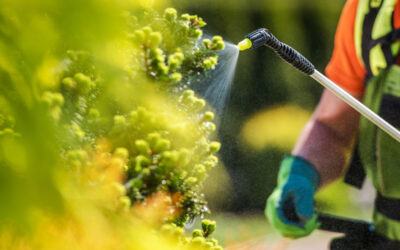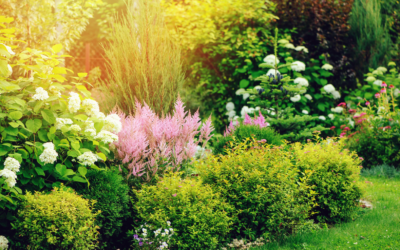Don’t Let Tree Pests Bug Your Beautiful Colorado Trees This Spring!
Ah, springtime in Colorado! The mountains are showing their green again, the flowers are starting to bloom, and our trees are waking up from their winter slumber. But with the return of warmer weather also comes the resurgence of some unwelcome guests: tree pests. Identifying and managing these critters early is crucial for maintaining the health and beauty of your landscape.
As your local Denver arborist experts, we’ve put together a guide to some common spring tree pests in our area and what you can do to protect your leafy companions. We also want to address the ongoing and serious threat of the Emerald Ash Borer (EAB).
Watch Out For These Common Colorado Spring Tree Pests:
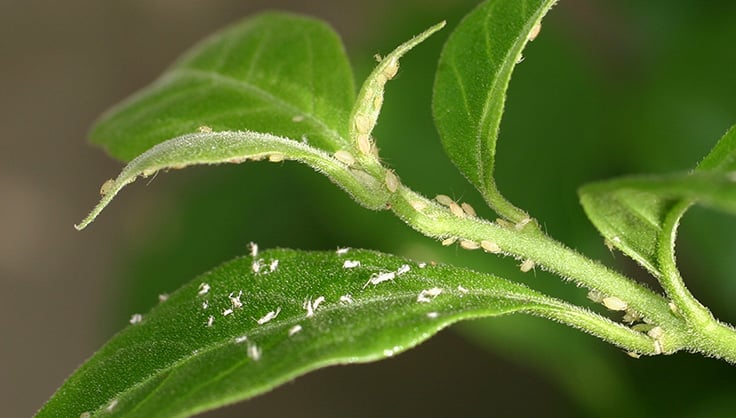
Aphids
Aphids: These tiny, soft-bodied insects are often found in clusters on new growth, such as leaves and stems. They feed on plant sap, causing leaves to curl, yellow, and become sticky with honeydew (their sugary waste product). Honeydew can also attract sooty mold. You might notice ants crawling on your trees, as they feed on the honeydew aphids produce.
- Where to look: Undersides of new leaves, tips of branches.
- Damage: Leaf curling, yellowing, stunted growth, sticky residue.
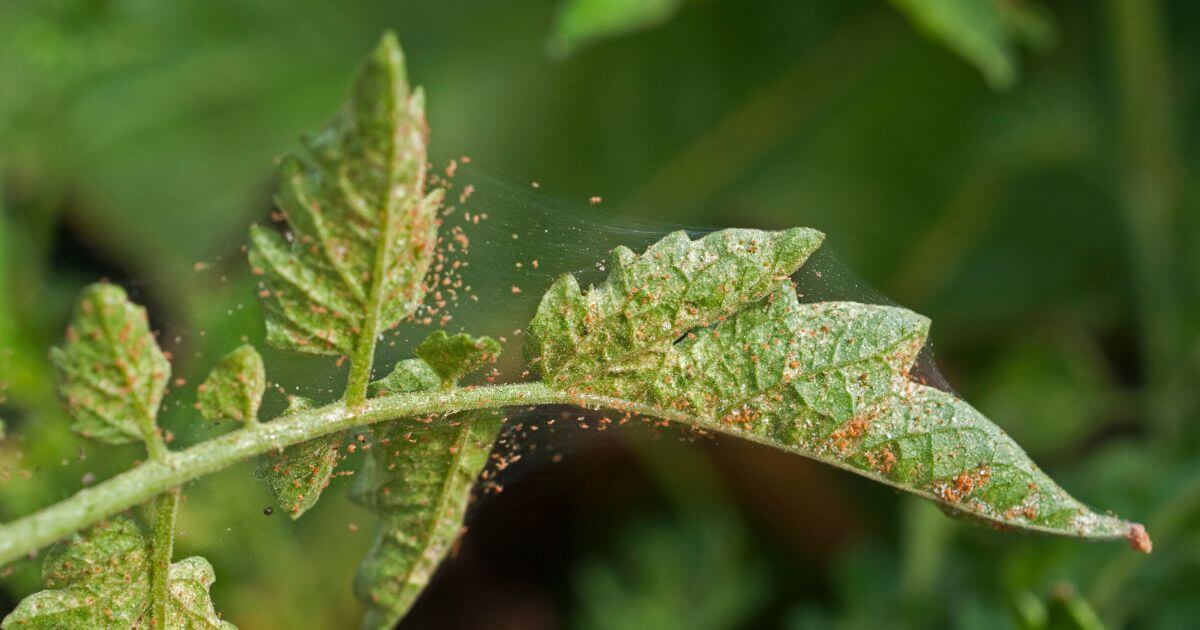
Spider Mites
Spider Mites: Although technically not insects, these tiny arachnids thrive in dry conditions and can multiply rapidly, especially during warmer spring days.
-
- Where to look: Undersides of leaves. Look for fine webbing.
- Damage: Stippled or bronze leaves, leaf drop in severe infestations
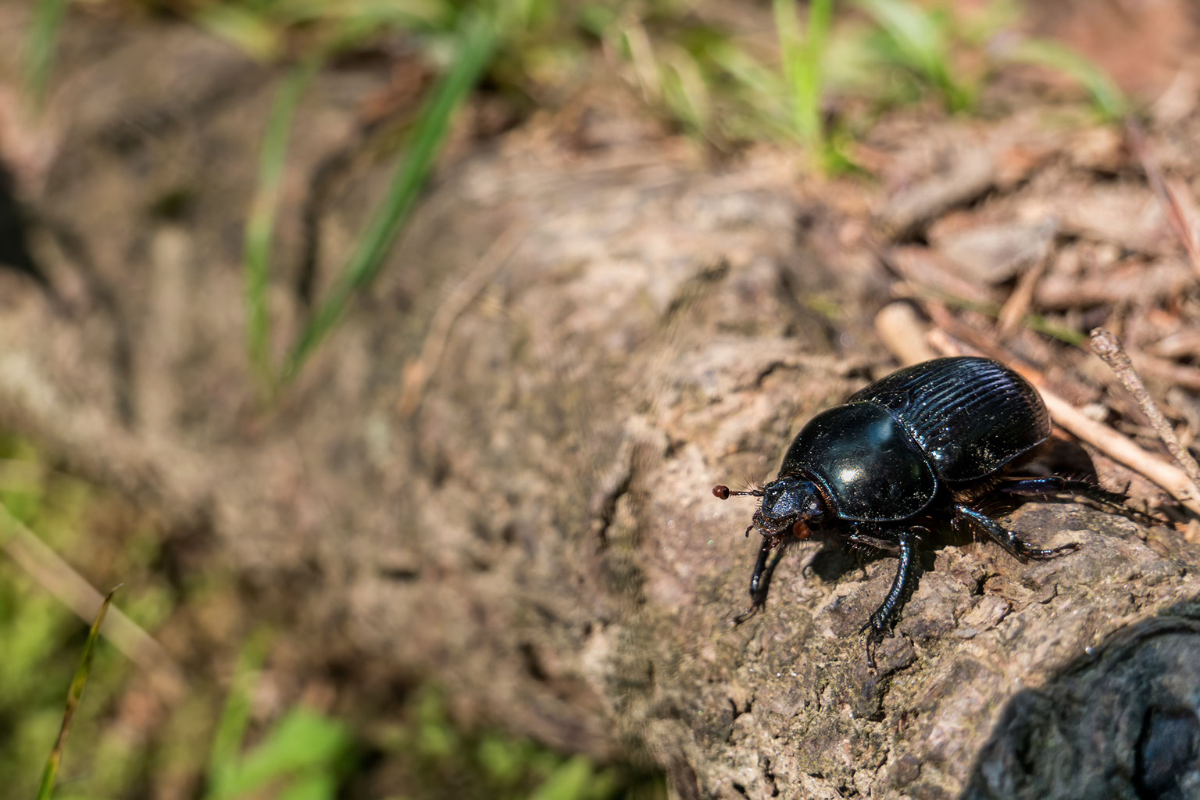
Pine Bark Beetles
Pine Bark Beetles (Early Stages): While more notorious for their activity later in the summer, some pine bark beetle species can begin their activity in the spring as temperatures rise. Look for small holes in the bark of pine trees and sawdust-like frass (insect excrement) at the base of the tree or in bark crevices. Early detection is key for managing these destructive pests.
-
- Where to look: Bark of pine trees, especially stressed or weakened trees. Look for small entry holes and sawdust.
- Damage: Yellowing or browning needles, eventual tree death if infestations are heavy.
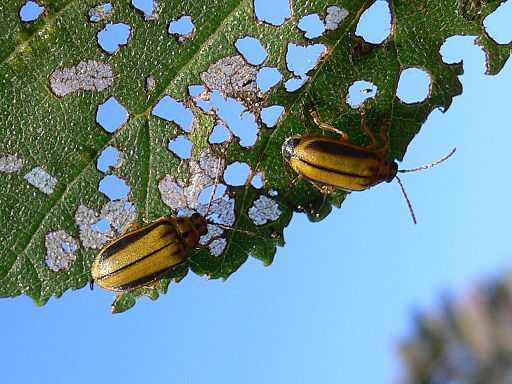
Elm Leaf Beetle
Elm Leaf Beetle: These small, yellowish beetles with black stripes emerge in the spring and feed on elm leaves, creating small, irregular holes. Their larvae also feed on the undersides of leaves, causing more significant damage.
-
- Where to look: Elm leaves. Look for small holes and larvae on the undersides.
- Damage: “Shot-hole” appearance of leaves, skeletonized leaves.
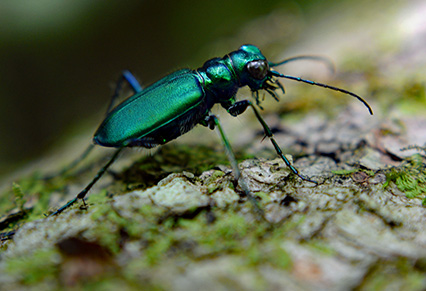
Emerald Ash Borer (EAB)
Emerald Ash Borer (EAB): While perhaps not as visibly active on the foliage in early spring, the Emerald Ash Borer remains a critical concern for ash tree owners in the Denver area. This invasive beetle has been confirmed in Colorado and poses a significant threat to all species of ash trees.
-
- Where to look (Signs of Infestation): Look for thinning canopy, yellowing or browning leaves (even if the rest of the tree appears healthy), D-shaped exit holes (about 1/8 inch wide) in the bark, S-shaped galleries under the bark (visible if bark is peeled away), and increased woodpecker activity (feeding on larvae).
- Damage: Canopy dieback starting from the top, bark splitting, D-shaped exit holes, eventual tree death.
Prevention and early intervention are crucial. - Know Your Ash Trees: Identify any ash trees on your property (they have opposite branching and compound leaves with 5-9 leaflets).
- Monitor for Symptoms: Regularly inspect your ash trees for the signs of EAB mentioned above.
- Consider Preventative Treatment: For high-value ash trees in areas where EAB has been confirmed, preventative insecticide treatments applied by a certified arborist can be highly effective. These treatments are most effective when applied before an infestation occurs.
- Report Suspected Infestations: If you suspect your ash tree may be infested with EAB, contact the Colorado Department of Agriculture or a certified arborist immediately. Early detection is crucial for slowing the spread.
- Consider Removal and Replacement: If an ash tree is heavily infested, removal is often the best course of action to prevent the spread to other healthy ash trees. Consider replacing ash trees with non-host species to maintain your landscape’s tree canopy.
- Where to look (Signs of Infestation): Look for thinning canopy, yellowing or browning leaves (even if the rest of the tree appears healthy), D-shaped exit holes (about 1/8 inch wide) in the bark, S-shaped galleries under the bark (visible if bark is peeled away), and increased woodpecker activity (feeding on larvae).
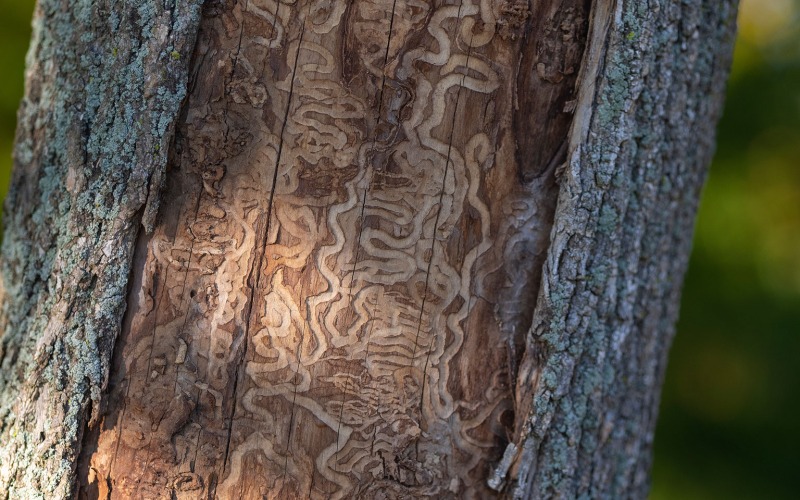
What Can You Do? Early Detection and Management Tips:
- Regular Inspection: The best defense against tree pests is vigilance. Take some time each week to carefully inspect the leaves, branches, and bark of your trees for any signs of infestation. Look for unusual spots, discoloration, holes, sticky residue, the presence of insects themselves, and specifically for ash trees, be on the lookout for EAB symptoms like canopy dieback and D-shaped holes.
- Maintain Healthy Trees: Healthy, well-maintained trees are generally more resistant to tree pest infestations. Ensure your trees are properly watered (especially during dry periods), mulched correctly, and receive appropriate fertilization.
- Manual Removal: For small infestations of larger pests like caterpillars, you can often remove them by hand and remove them.
- Horticultural Oil and Insecticidal Soap: These are often effective and less toxic options for controlling soft-bodied pests like aphids and spider mites. Apply them thoroughly, ensuring good coverage of the affected areas, especially the undersides of leaves. Always follow the product instructions carefully.
- Water Blast: A strong stream of water from your garden hose can dislodge aphids and spider mites from smaller trees and shrubs. Repeat as needed.
- Professional Arborist Consultation: If you notice a significant infestation of any tree pest, including suspected EAB, or are unsure about the type of pest affecting your trees, it’s always best to consult with a certified arborist. At Donovan Arborists, we have the expertise to accurately identify the pest and recommend the most effective and environmentally responsible treatment options, including strategies for managing EAB. We can also assess the overall health of your trees and provide preventative care advice.
Protect Your Green Investment This Spring
Don’t let pesky insects, especially the destructive Emerald Ash Borer, take a bite out of your beautiful Colorado landscape! By being observant and taking proactive steps, you can help your trees thrive this spring and beyond. If you suspect a pest problem, particularly with your ash trees, or want to ensure all your trees are in top shape, contact the Donovan Arborists team at (303) 623-8733 (TREE) or use our FREE ESTIMATE FORM today for a consultation.

